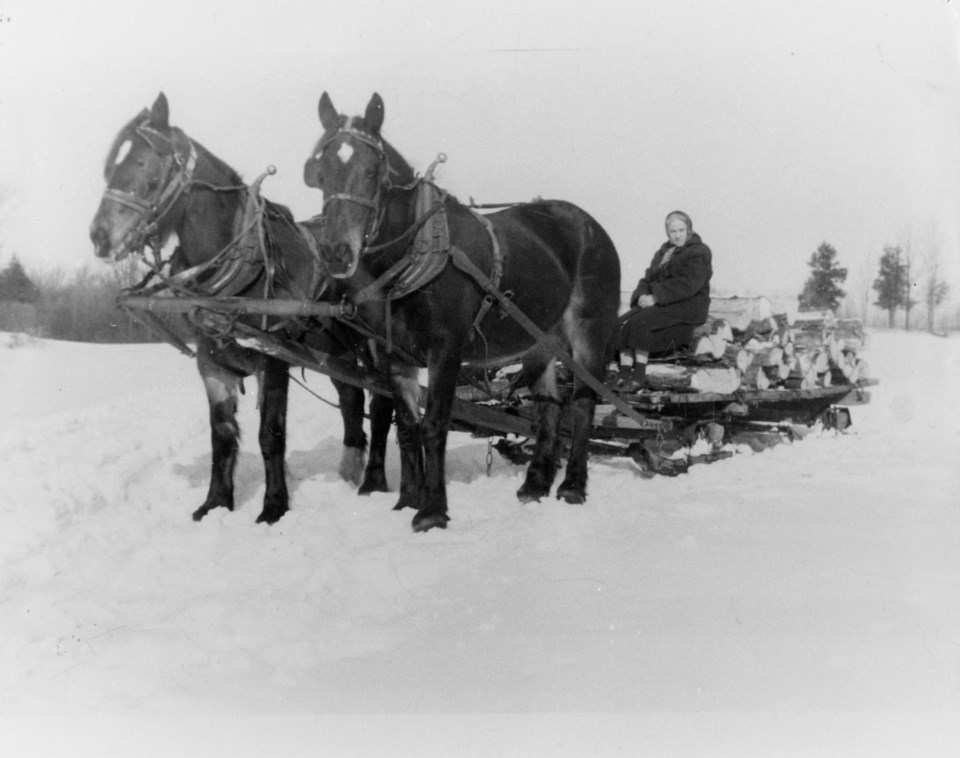Growing crops and rearing livestock required cleared land, yet all 19th-century farmers maintained extensive woodlots on their properties. Ever wonder why?
The main reason was to supply the firewood a 19th-century homestead required for cooking food and providing warmth to ward off the deep winter cold.
A woodlot needed to be extensive because an early home consumed a lot of firewood over the course of the year. Poor insulation ensured homes were drafty. Additionally, and perhaps most importantly, the fireplaces of the day were tremendously inefficient. A settler’s cabin would have had an open hearth, in which as much as 90 per cent of the heat escaped up the chimney. Not only did the chimney facilitate heat loss, but it also allowed cold air to seep in. And then, of course, cook stoves were fuelled by wood.
As a result, households might have used as much as 40 cords per year. (A cord of wood is 128 cubic feet, or a stack of wood four feet wide, four feet high, and eight feet long.) That’s a lot of firewood.
Things improved significantly once a family could afford a cast-iron fireplace that would reflect heat into a room instead of up a chimney, but nonetheless, large quantities of firewood were still required for heating and cooking. That meant a lot of cutting and splitting.
Harvesting of the wood typically took place in late April. The hectic maple syrup season would be over by then, but it was still too early to begin working the fields. Cutting and splitting in April ensured wood was aged and dried by the time it was needed that autumn.
Woodlots also represented an additional source of income for landholders, as firewood could be sold to town residents. Perhaps the woman pictured above is on her way to doing just that?



